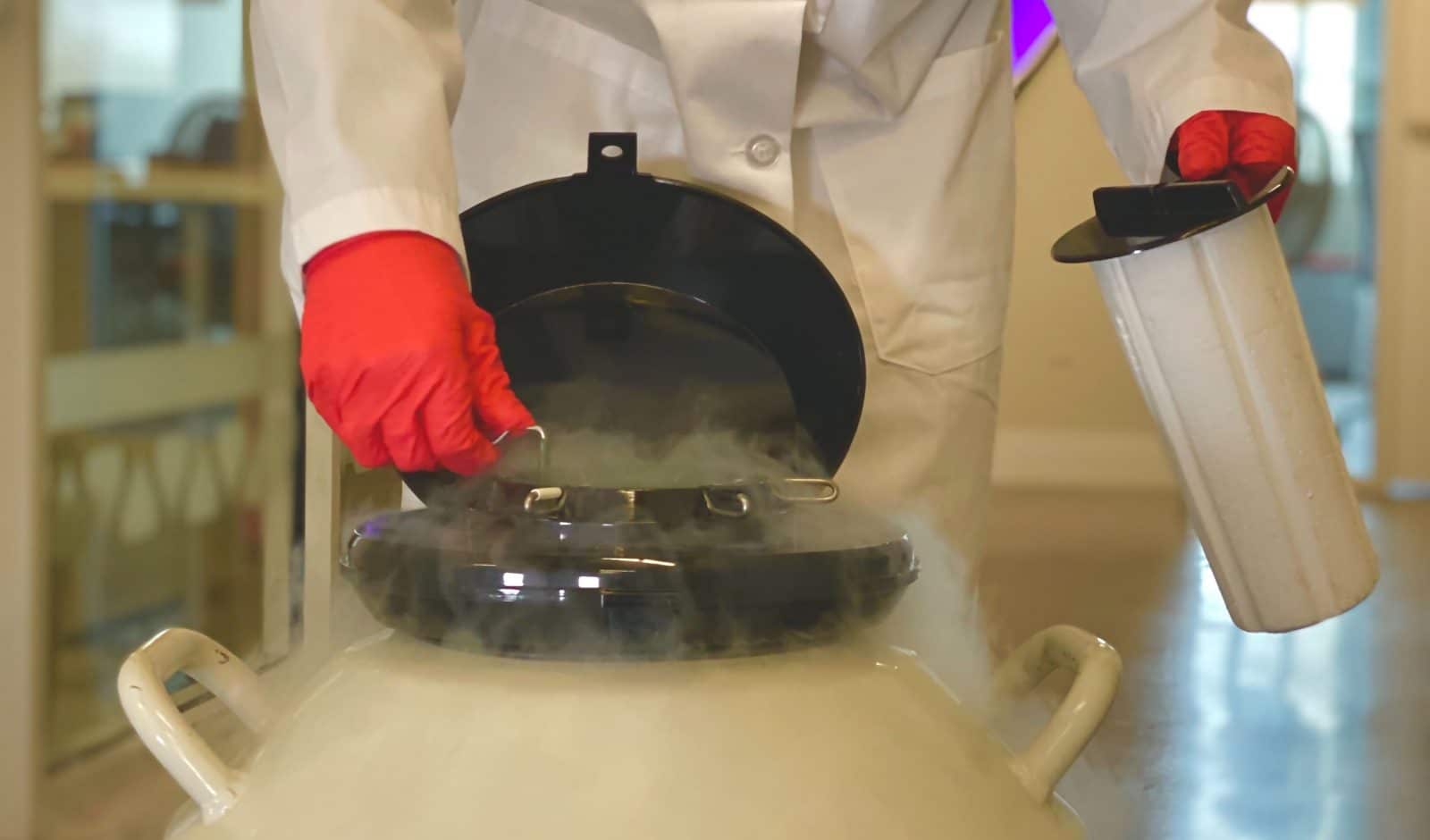

Overview
Freezing cells is a useful step to prolong the use of a cell lot. This is a general protocol for freezing cells that do not accompany a manufacturer protocol. Please note that not following manufacturer instructions may result in cell death or improper function.
Materials
- Cell Culture Flasks
- Cell Medium
- ReagentPack™ Subculture Reagents
- Trypsin/EDTA
- Trypsin Neutralizing Solution (TNS)
- HEPES Buffered Saline Solution (HBSS)
- Cell Freezing Solution
- Centrifuge Tubes
- Cryogenic Cell Vials
- Cell Freezing Container
- Microscope
- Water/Bead Bath (37˚C)
- -80˚C Freezer
- Liquid Nitrogen Tank
- 70% Ethanol
- Kimwipes
- Lab Markers
- Biosafety Cabinet (BSC)
- Automatic Pipet Filler
- Serological Pipets
- Micropipettes
- Micropipette Tips
- Vacuum Bottle
Methods for Freezing Cells (General)
- Warm cell medium and ReagentPack™ reagents to 37˚C in the water/bead bath;
- Thaw the cell freezing medium (usually composed of 10% sterile DMSO in FBS) and keep it at 2-8˚C until use;
- Remember to spray everything down with 70% ethanol and wipe it with Kimwipes before moving into the BSC;
- Follow this protocol to prepare a cell pellet and this protocol to count your cells;
- Now that you have counted your cells and have your cell solution in a centrifuge tube, centrifuge them at 100-200 g, for 5-10 min;
- Note: different cell types will have different centrifugation parameters.
- Find the amount of cell freezing solution and cryogenic cell vials needed for your cell vials by using the formulae below. It is recommended to store 1-10 million cells per vial, depending on cell type;
- Number of vials = number of cells/number of cells per vial
- Volume of cell freezing solution = 1.5 mL * number of vials
- Resuspend cells from the centrifuge tube in the calculated volume of cell freezing solution;
- Aliquot 1.5 mL of cell solution into each cryogenic vial;
- Ensure to label your vial appropriately with number of cells, passage number (P + 1), cell type and date;
- Place the cell vials in the cell freezing container and move it to a -80˚C freezer. This step is important to ensure cells experience a gradual temperature drop, which maintains their viability;
- After 24 h in -80˚C, remove your cell vials from the cell freezing container and place them in liquid nitrogen;
- It is good practice to keep a cell log spreadsheet with cell types, passage numbers, freezing dates, and cell quantities per liquid nitrogen tank container. That way, you can easily get access to your cells as needed for your experiments.

